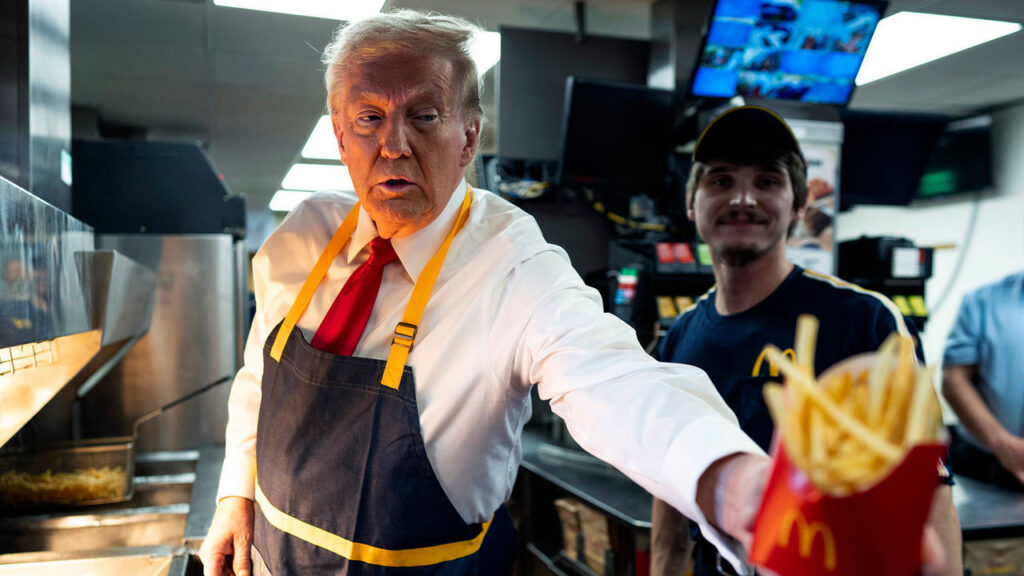President Donald Trump is well-known for his affinity for fast food, a passion that seems to rival even his enthusiasm for economic strategies like tariffs. This unusual preference was prominently showcased during his presidency, particularly highlighted by an extravagant fast-food banquet he arranged during a government shutdown early in his first term. The guest for this culinary event was a visiting American football team, who were treated to a spread that included an abundance of burgers, along with “many, many French fries.” The event exemplified his approach to hospitality and has remained a memorable aspect of his time in office.
During his 2016 presidential campaign, Trump’s fast-food habits were often a topic of conversation. According to one of his aides, he had a peculiar eating regimen that consisted of a substantial intake of high-calorie items. Notably, he would frequently order two fish burgers and two Big Macs, often opting to forgo the buns altogether. This interesting dietary choice not only reflects his personal tastes but speaks to the broader narrative of his unconventional approach, both in lifestyle and political philosophy.
Fast food, emblematic of American culture, became a symbolic representation of Trump’s persona and his appeal to certain sections of the electorate. It illustrated a connection to middle-class values and an image of comfort food, aligning with Trump’s self-portrayal as a man of the people. While many health experts criticize fast food for its excessive calories and lack of nutritional value, Trump’s fondness for these quick, premiere meals arguably resonated with voters who appreciated his straightforward, no-frills character.
Moreover, Trump’s engagement with fast food extends beyond mere indulgence. It reveals a layer of strategy entwined with his brand, which emphasizes familiarity, accessibility, and a touch of nostalgia for Americana. Many supporters perceived his fondness for junk food as an endearing quirk that made him relatable, contrasting sharply with the elite image often associated with politicians. This juxtaposition helped solidify his place as a populist figure, appealing to those who felt disconnected from establishment politics.
The juxtaposition of Trump’s fast food preferences with his political priorities illustrates the complexities of his leadership style. While Trump may have been indulging in a diet characterized by fried foods and sugar, his administration was keen on pushing forward with significant policy decisions, especially regarding tariffs and trade. This duality makes his presidency a unique case study in American politics, blending lifestyle choices with high-stakes economic negotiations.
In presidential contexts, food often plays a role beyond sustenance; it can serve as a reflection of identity, values, and priorities. For Trump, engaging with fast food publicly not only entertained but also engaged his base. The carefully constructed public persona he crafted intertwined his dietary preferences with broader themes of populism and anti-establishment sentiments, which were instrumental throughout his campaigns and during his tenure in office.
As his presidency unfolded, the stark contrast between his personal quirks, such as the penchant for fast food, and strategic political decisions became a subject of both criticism and fascination. While some viewed this as superficial, others found it emblematic of broader cultural dynamics, suggesting that Trump was indeed tapping into a fundamental aspect of American life.
In conclusion, Donald Trump’s love for fast food, highlighted by memorable moments like the football team banquet and his unique eating habits during his campaign, serves as a microcosm for understanding his political ideology and public appeal. This combination of culinary choices and political philosophy has left an indelible mark on the narrative of his presidency and continues to provoke discussion about the relationship between personal habits and political image in contemporary America.









